Pick shoes that make your feet happy and are good for your overall health

Move over, Carrie Bradshaw. Those pointy stilettos and fashion sneakers may not be worth the pain, after all.
Advertisement
Cleveland Clinic is a non-profit academic medical center. Advertising on our site helps support our mission. We do not endorse non-Cleveland Clinic products or services. Policy
When it comes to shoes, both men and women alike will shop around for that perfect pair they can wear on a daily basis or even just for that one special occasion. But neither group has it quite right, says podiatric surgeon Georgeanne Botek, DPM.
Dr. Botek shares tips and answers the most frequently asked questions about choosing proper shoes that are good for your feet — and your overall health.
Not necessarily, but they can make your great toe red, inflamed and symptomatic.
Although heels won’t cause bunions to develop, they can often hasten that development. Bunions are a condition you usually inherit and often occur when you have a flat foot and a tight heel cord.
Heels can tighten your heel cords and increase pressure on the front part of your foot. This causes pain by overloading the metatarsal heads, which are the bones under the ball of your foot. This condition is called metatarsalgia or capsulitis. If you have a neuroma, a thickened nerve tissue between your toes, wearing heels will worsen the pain.
Yes. It’s wise to avoid buying any shoe that feels tight around your toes — whether it’s a heel, flat or sneaker. Wearing tight shoes even one time can cause debilitating neuromas or bursitis, which is the inflammation of the protective sacs surrounding the joints in your feet.
Advertisement
High heels put pressure on the metatarsal bones in the balls of the feet, as well as your lower back. Over time, wearing high-heeled shoes also functionally shorten the muscles and tendons in the back of your legs. But how high is too high?
“The best heels are less than two inches,” says Dr. Botek. “If you do wear ultra-high heels, avoid wearing them on consecutive days or for longer than four hours at a time. Wedges or platforms are kinder on the feet than a narrow high-heeled shoe.”
Treat your feet whenever you can by choosing shoes that support your whole foot. If any shoe squeezes your toes, keep shopping. Good shoes not only relieve foot pain, but they prevent future foot problems, improve posture and ease stress on your knees, hips and back.
Tight shoes can also aggravate bunions on the inside or outside (called a tailor’s bunion) of your feet. By shifting your body mass forward, heels can lead to low back pain as your spine and hip muscles adjust. Extra pressure on the inside of your knees can lead to arthritis. If you have low back pain or arthritis, buy shoes with arch support.
The bottom line: Avoid shoes that are narrow and constrict your forefoot.
“While avoiding heels for the rest of your life is not exactly realistic, reserve them for special occasions and kick them off whenever you can,” says Dr. Botek. “Pointy stilettos are hardest on the feet, while wedge heels give better support, especially if you have plantar fasciitis or Achilles tendonitis.”
Some ballet flats offer decent arch support, depending on the brand. You need to inspect all shoes carefully to make sure they have a good arch and good side-to-side stability.
“You can add an insole to supplement the arch of a shoe, as long as you buy shoes with removable insoles,” says Dr. Botek. “They are tough to find, but they are out there. I prefer a full-length insole that has a firm arch that won’t easily collapse.”
Instead of buying over-the-counter insoles at a drugstore, head to your local shoe store that’s familiar with them. They’ll be able to recommend the best insoles for you. Bring the foot insert with you to try on shoes because this will ensure that you get the right size to accommodate the insoles.
“A word of caution: If you have flat feet or high arches, ballet flats will never give you the good side-to-side stability you often need,” warns Dr. Botek. “Choose flats with room for an insole or look for ones with built in arch support — especially if you have low or high arches or foot pain. Thin, flimsy ballet flats will also exaggerate pain in your arch or forefoot because they don’t offer the stability you need.”
Sometimes. The best flip-flops that have thicker soles, deeper heel cups and support foot beds can be a good hot weather option. Wear them with caution, though. Walking long distances or fast paced can be dangerous. Many falls and broken toes occur with open-backed and open-toed shoes.
Advertisement
“In general, save these for the beach,” says Dr. Botek.
Time, age and weight gain contribute more to adult onset flat foot. Shoes without arch support don’t help, though.
While genetics are the biggest factor in developing flat feet, shoes with poor arch support may contribute to progression over a very long period of time.
Good supportive shoes may slow the progression of flat feet but generally won’t stop the process completely. Flat or soft-soled shoes can lead to heel pain and plantar fasciitis, which is the pain in the bottom of your feet. Shoes that expose your skin can lead to calluses, dry skin, fissuring or cracking.
“Look for shoes that cover your feet and have firm soles,” says Dr. Botek. “You shouldn’t be able to squeeze your shoe like an accordion.”
Yes, wearing heels shifts the center of your body mass toward the front of your body. This can add extra stress to your knee and hip joints in addition to the front of your feet.
Flats or flip-flops without support have the opposite effect, shifting the center of your body mass backward. This also affects your hips and knees, and can cause arch pain, tendonitis and Achilles tendon problems.
When shopping, pick shoes shaped like your feet. The toe box should be rounded or oval to mirror the shape of your feet. If the toe box is too narrow, it can aggravate bunions and cause corns or a pinched nerve. There should be a fingertip of length between your longest toe and the tip of the shoe.
Advertisement
“The qualities of a good shoe become even more important as you age,” says Dr. Botek. “As feet age, they lose some of the fat pad that provides natural cushioning. If you’re older, wear shoes or slippers around the house for extra protection.”
Comfort is key, and with so many different types and styles of running and walking shoes, it may be overwhelming to find the perfect pair for leisure or athletic training.
“Most companies put a lot of their technology into the running shoe,” says Dr. Botek. “Better technology means better support for your feet. Running shoes also have more styles designed specifically for people with high arches as well as those with flat feet.”
Avoid buying sneakers just for their looks alone. If you can, head to a store that specializes in running. They can fit you to your perfect sneaker just by measuring your feet and getting a glimpse into your leisurely or athletic lifestyle.
After spending some cash on those new sneakers, it may be tempting to keep them forever, but it’s crucial to replace them often.
“It depends on how much you stand and walk in them,” says Dr. Botek. “You need to replace your primary walking shoes at least once a year, but if you are active, you may need to replace athletic shoes every three to six months.”
Advertisement
It can be hard to resist those gorgeous heels or those funky, trendy shoes that all the fashion houses are talking about.
“It’s OK to indulge in trendy shoes occasionally,” says Dr. Botek. “These shoes — even the fashion sneakers appearing on the runway — should be worn for short periods of time. Don’t make them your footwear mainstay.”
To find the best shoes for your feet that truly fit, try them on. Shoe sizes aren’t universal across different brands. For better results, try them on at the end of the day because feet swell after daily use. If you’re an online shopper, be sure to try shoes on when you receive them — and don’t be afraid to return them if they don’t fit well.
Lastly, don’t settle for sore feet. If your feet hurt when you get home from work, don’t just chalk it up to a long day. If you regularly experience foot pain, call your doctor.
“Foot pain is not normal,” says Dr. Botek. “While some patients fear complicated surgeries, treatment can be simple. We often suggest surgery on your shoes before your feet.”
If you’re at risk for foot problems or you already have foot problems, find good walking shoes with plenty of room in the toes and good side-to-side stability. They’ll keep your feet from rolling in or out, and you’ll feel a whole lot better.
Learn more about our editorial process.
Advertisement
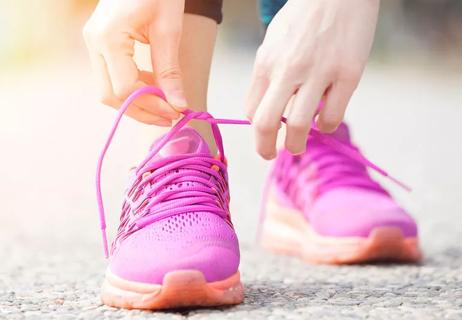
Look for a pair that are functional and flexible

Help for plantar fasciitis, neuroma, bunions and more

Choose fit and function over fashion
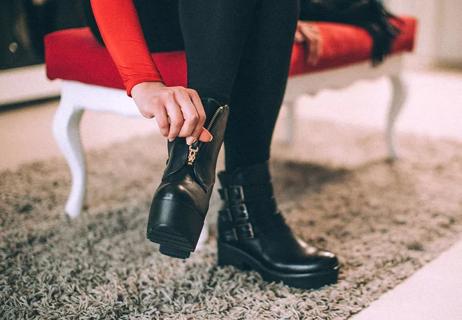
If they don’t fit well in the store, they won’t fit any better at home
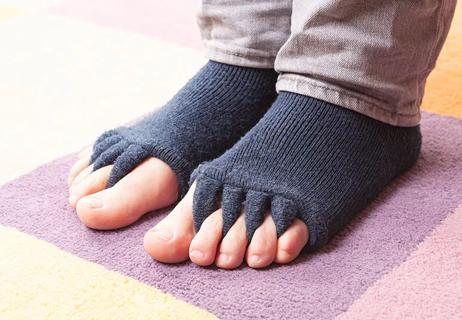
Toe spacers and separators can add some comfort, but they’re not a fix-all

Dulling feeling in your feet could cause problems
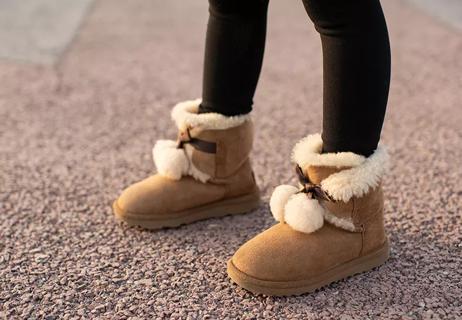
The lack of arch support in the popular footwear can lead to numerous aches and pains
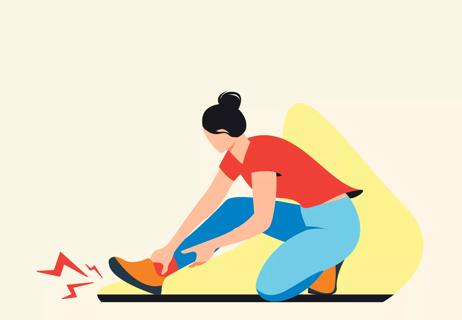
You might have plantar fasciitis, Achilles tendinitis or arthritis

Type 2 diabetes isn’t inevitable with these dietary changes

Applying a hot or cold compress can help with pain